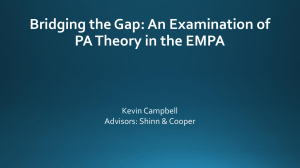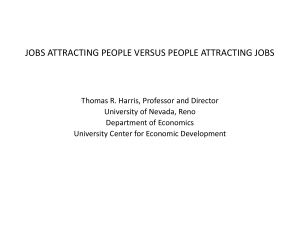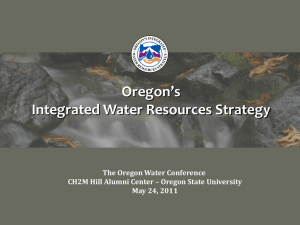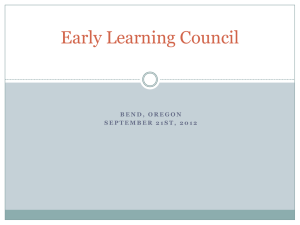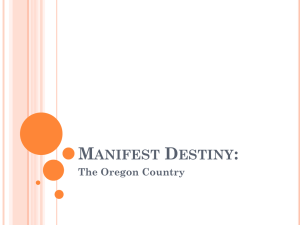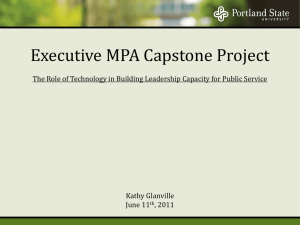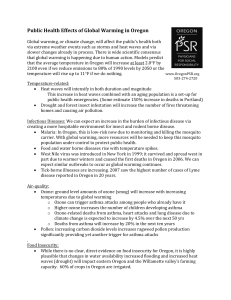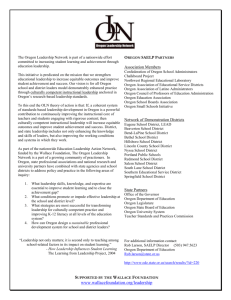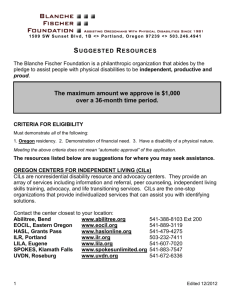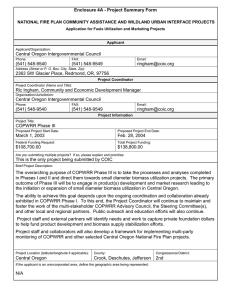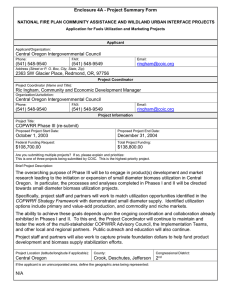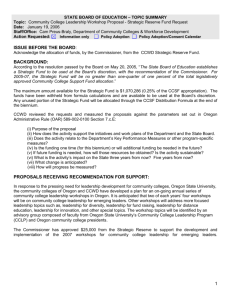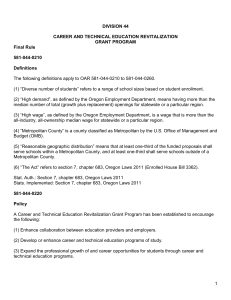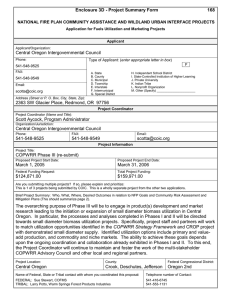An Analysis of Social Media Policy Development within Oregon`s
advertisement
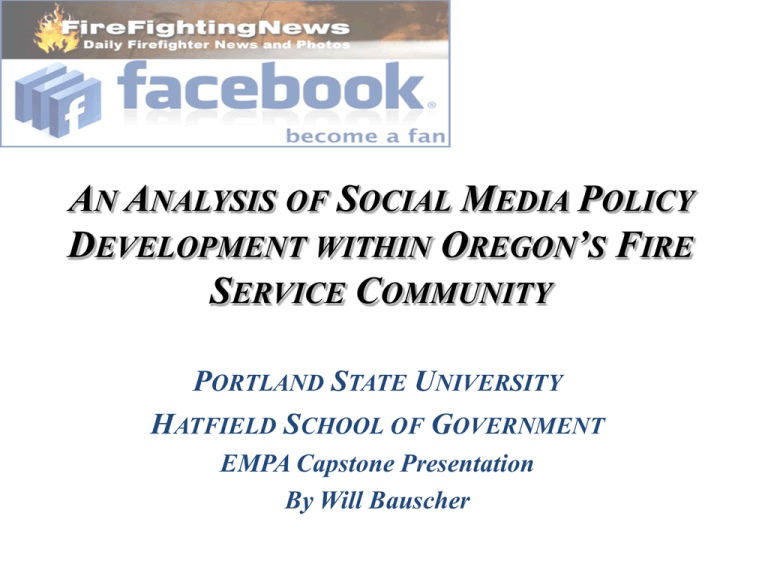
AN ANALYSIS OF SOCIAL MEDIA POLICY DEVELOPMENT WITHIN OREGON’S FIRE SERVICE COMMUNITY PORTLAND STATE UNIVERSITY HATFIELD SCHOOL OF GOVERNMENT EMPA Capstone Presentation By Will Bauscher DRIVING FORCES BEHIND PROJECT 1. In recent years, a growing number of fire service agencies, journals, and associations, have created a presence on the diverse and ever expansive social networks of Face book, MySpace, YouTube, Twitter, and etc. 2. Increasing use of social media tools among those entering fire service – 85% new candidates 3. Public at large increasing use of social media tools for information PROJECT OBJECTIVE 1. The core objective and purpose of the proposed research effort centers on identifying essential elements and/or attributes influencing social media policy for Oregon’s Fire Service community: • “What is the influence of structural, social, economic and political attributes upon existing policy and perceptions around social media in Oregon’s Fire Service?” CONCEPTUAL FRAMEWORK EXISTING LITERATURE • Emphasize three areas: – General social media topics (expansive) • Utilization; Privacy; Security; Cost/Benefit; Management of. . . – Policy ‘how to’ documents • Dilemmas; Essential elements; Guidelines and ‘Best Practices’ already established. – Policy Analysis • Analytical methodology; Decision making; Application of policy theory. METHODS – CONTENT ANALYSIS (BIRKLAND’S – THE ENVIRONMENT OF POLICY MAKING) METHODS – CONTENT ANALYSIS • Focus on Oregon Fire Departments • Selection based upon list maintained by State Fire Marshal – Randomly sorted and utilized email for survey distribution. • Of 317 departments contact information was obtained for 82. • Survey data collected and analyzed & coded into four categories of influence – structural, social, political, and economic. • Social media policies were also collected and analyzed into the four categories of influence. METHODS – CONTENT ANALYSIS (OREGON’S FIRE SERVICE – THE ENVIRONMENT OF POLICY MAKING) 1. Education and understanding of social media principals among elected and administrative leaders 2. Level of commitment and/or apprehension to social media use 3. Internal and external perceptions of social media benefits/risks 4. Historical and sentinel events with positive and negative connotations. 5. Political barriers to social media utilization 1. Presence or absence of existing policies related to social media 2. Electronic infrastructure 3. Organizational mission & core operational requirements 4. Organizational & Operational structure relating to policy development and administration. 5. Structural barriers to social media policy implementation 1. Perceived costs verses benefits of social media utilization – including non economic related elements. 2. Current and future budgetary constraints 3. Resources associated with effectiveness and efficiency sustainability 4. Staffing and support 5. Economic barriers to social media utilization 1. Workforce demographics and generational influences 2. Organizational interactions internally and externally 3. Community demographics and expectations. 4. Current and potential utilization of social media tools 5. Social or cultural barriers to social media utilization ANALYSIS & DISCUSSION ANALYSIS & DISCUSSION ANALYSIS & DISCUSSION ANALYSIS & DISCUSSION (AGENCIES CONSIDERING USING SOCIAL MEDIA) ANALYSIS & DISCUSSION ANALYSIS & DISCUSSION ANALYSIS & DISCUSSION CONCLUSIONS & RECOMMENDATIONS • “Structural Policy Environment” greatly impacts social media policy in Oregon’s Fire Service – EMS Mission • Patient privacy, security • “Social Policy Environment” is increasingly impacting social media policy – Workforce and community expectations – Transparency in government – Ever increasingly ‘connected’ society CONCLUSIONS & RECOMMENDATIONS • “Political Policy Environment” influence is much more difficult to determine. – All politics is local – Driven by organizational Mission, Vision, Values – Conscious choice to adopt social media • “Economic Policy Environment” is predominantly a matter of choice. – Benefits outweigh costs SOCIAL MEDIA POLICY DEVELOPMENT FOR OREGON’S FIRE SERVICE • Emphasis must be placed upon alignment with organization’s mission, vision, values – Be clear about expectations, desires, and means of accountability. • Considering legal mandates – HIPAA, BOLI, FLSA, Constitution, Labor agreements, etc. • Developed with focus on benefits verses potential pitfalls. • Go for it – “Semper Gumby” – Policies on social media are living documents. ACKNOWLEDGEMENTS • Faculty & Staff – Advisor Dr. Matt Jones – EMPA faculty • Dr. Ingle, Dr. Nishishiba, Dr. Morgan, Dr. Shin, Dr. Cooper, Dr. Kass, Dr. Larsen, Dr. Lazenby. – EMPA Staff • Yachi Iisako – EMPA Mentor • Davis Moriuchi • Colleagues – fellow students MY WIFE & CHILDREN





